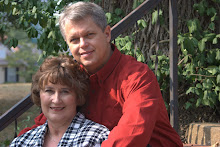Coming to Jerusalem during Holy Week (Passover) was quite an experience in itself. We stayed at the Grand Court Hotel and arrived with all of our luggage and met our team there. However, our hotel rooms were not quite ready.
I don't know if you realize it or not but the most significant observance related to Passover involves the removal of
chametz (leaven) from the homes (and the hotels!) This commemorates the fact that the Jews leaving Egypt were in a hurry, and did not have time to let their bread rise. It is also a symbolic way of removing pride from the soul.
Chametz includes anything made from the five major grains (wheat, rye, barley, oats, and spelt) that has not been completely cooked within 18 minutes after coming into contact with water. Traditional Jews also avoid rice,corn, peanuts, and beans as if they were
chametz. All of these items have been used to make bread, thus use of them was prohibited to avoid any confusion. All
chametz including utensils used to cook
chametz must either be disposed of or sold to a non-Jew.
The process of cleaning the home (or hotel) of all
chametz in preparation for Passover is an enormous task. To do it right, you must spend several days scrubbing everything down, going over the edges of your stove and fridge with a toothpick and a Q-tip, covering all surfaces that come in contact with foil or plastic wrap. After the cleaning is completed, the morning beore the seder, a formal search of the house (or hotel) for
chametz is undertaken and any remaining
chametz is burned.
Our hotel was in that process. Everything in the kitchen and in the dining room was wrapped in plastic wrap. No food was being served that day because of the preparation. Undoubtedly, this hotel does a lot of Jewish business and had to be made "kosher" for the Passover meal.
WOW! Talk about living UNDER THE LAW!
Stay tuned...









